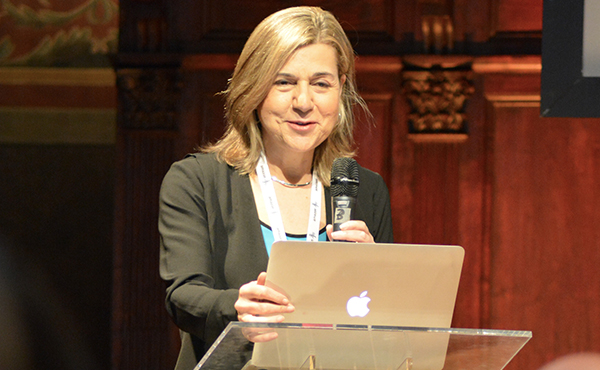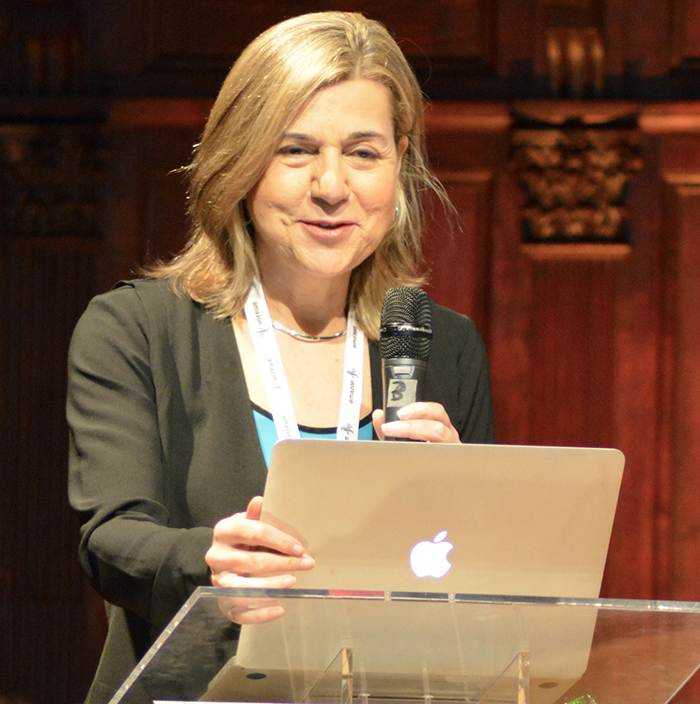by Delphine Reuter
 photo by Jemini Nayee
photo by Jemini Nayee
Margaret Sullivan, public editor of the New York Times sat down with us to discuss her role as ombudsman of the newspaper, and her relationship with readers and reporters.
What does it mean to be a public editor?
I’m the editor for and with the readers, but I have no role in editing the New York Times. I have no authority beside having the power of the pen, and going to the people internally and asking them for a change. That’s quite a powerful tool. The journalists at the Times seem to be open to the idea of a public editor. If sometimes they’re in the spotlight, then it might be more difficult.
What does your work look like?
Something will crop up. It can be a gazillion things but usually it’s a reader’s email. I go to the sources at the Times: a journalist, an editor or both. Sometimes I quote them at length. In my article I first put in the reader’s complaint, then the response, and then I put my take at the end. I try not to be too overstated. I respect the people I work with very much and I respect the readers too. I do comment as well but the most important part of what I do is to serve as an intermediary between the reader and the Times’ journalist. I don’t see myself as the voice from on high. The independence is very integral to the job.
Is it your role to enforce the policies the Times has in place?
It works indirectly. It’s not like I can make a rule, but I can draw attention to it either on the blog or in my print column. It can help create awareness, which can help create change.
Is someone helping you sorting through all the emails you receive?
I have one assistant who’s very important. We get at least 1,000 emails a week and there’s also Twitter and phone calls. There are many ways people can get in touch with the public editor. My assistant does triage: just like in hospitals, she decides who needs urgent care and what can be held off for a little bit.
Can you give an example?
There was an obituary about a rocket scientist, Yvonne Brill. The obit upset a lot of people, especially on Twitter, because it mentioned her domestic skills, saying she made a “mean beef stroganoff”. It turned into this huge flap. The journalist was trying to make a contrast between being a woman and a scientist. It just didn’t end up working. It was a good thing to respond quickly because it was very much into the conversation at the time. People talk about the editorial writers as being in their ivory towers. Journalists can’t be as removed anymore.
Should all newspapers have a public editor?
The New York Times having someone internal doing this kind of self-scrutiny is an amazing commitment to the reader. I was the chief editor of a newspaper for 12 years and we had no public editor or ombudsperson. I tried to be as accountable as I could be with monthly chats and columns. I tried listening to what the complaints were but it wasn’t the same thing as an outside critical voice.
Can reporters come to you with concerns?
Yes. A reporter pointed out to me the issue of one-sided stories. Recently, a sentence of disclosure was included in an article. It read: “the New York Times agreed not to talk to other sources”. I talked to the reporter who published the story. Her reasoning was that competitors were going to have the same story and she didn’t want to miss out on it. I think the line of transparency is fine but the practice behind it is not OK. My position is that the New York Times should say this is not acceptable and should tell reporters to be ready to walk away from a story.
Can you tell us about Anonywatch?
A continuous problem at the Times and elsewhere is the use of unnecessary anonymous sources. The editors at the Times have been talking about it for years, but nothing much has been done about it. So I decided to start this feature on my blog called Anonywatch. It got tremendous coverage. I’m getting a lot of contribution from readers. They’re very good at finding them do. And I noticed that during the first two weeks I did it, it became hard to actually find anonymous sources in the Times.
What would you improve if you could?
I feel bad about having to pick and choose. I have to choose things that I think are of broad interest, speak of journalistic integrity or have some kind of significance. Each thing I do is time-consuming. Everyone I talk to says I’m very productive but I only take a small percentage of what comes to me. I can never say I’m satisfied. I just have to accept that.
You are also teaching at the Columbia J-School. What’s your class about?
Emily Bell from the J-School invited me to teach a class called “audience and engagement”. Emily is so conversant with so many things going on. The J-School dean Steve Coll, a former managing editor at the Washington Post, is bringing a lot of new thinking into the programme. I have to say that I learn as much a I teach.


